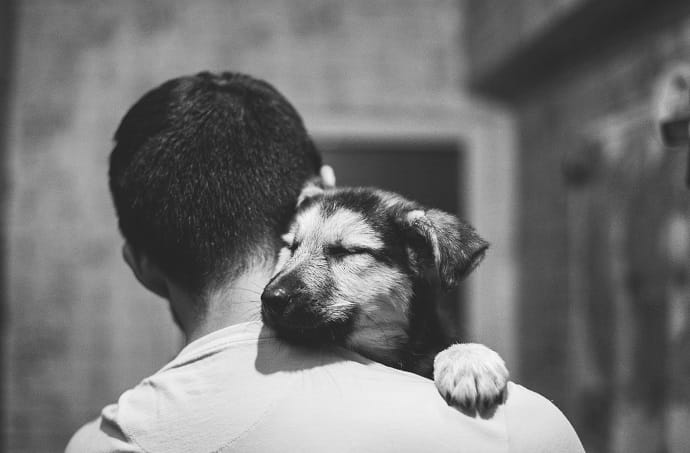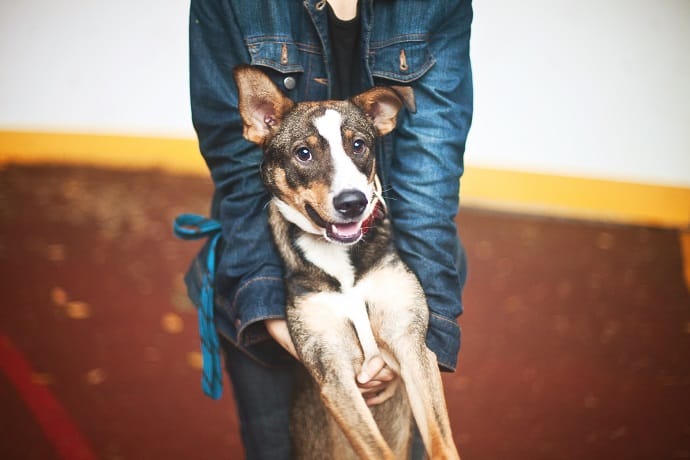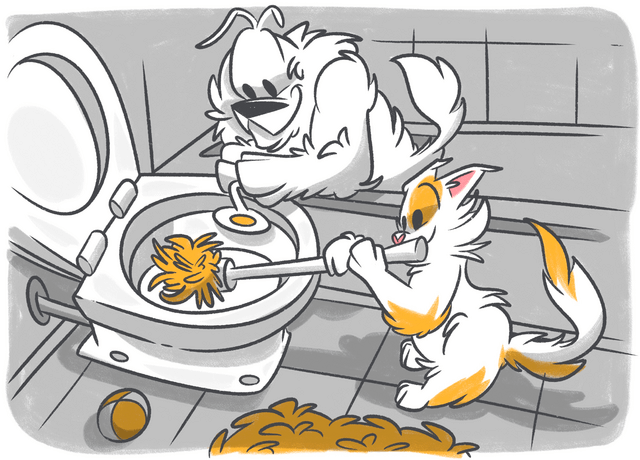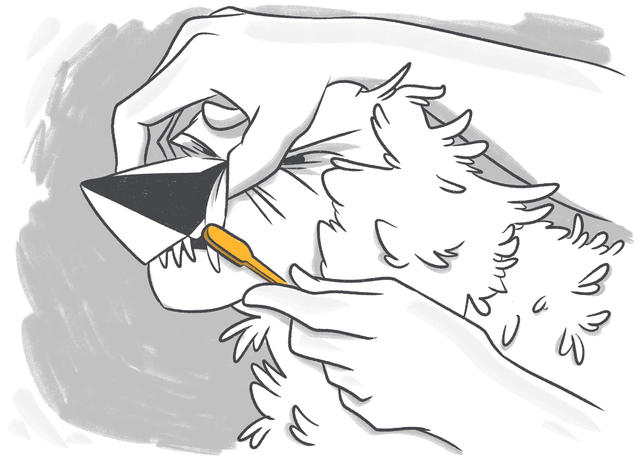Each year, around 1.5 million animals are euthanized in shelters all over the United States.
What can you do to change that?
When an animal ends up in a shelter, it can go one of two ways. They either meet their new family… or their end.

For most people, the answer is easy and often from their heart - adopt one of these pets in need themselves. Some places, like California recently, have made a significant move to require pet stores to only sell rescued pets. But if you’re not able to adopt a pet at the moment, don’t worry. There are plenty of ways to support shelters and rescue organizations even when you’re not ready for a new family member.
In this guide, you’ll find out all about shelters and rescue organizations, as well as how you can help make a difference. Whether its fostering dogs or cats, organizing pet adoption events or simply giving away a little of your time, it really doesn’t take much to pay it forward.
- Why Shelters Matter
- Shelters and Pet Rescue Organizations Explained
- How to Help Local Animal Shelters
- Petcube Rescue Program
- Final Thoughts
- FAQ
Why Shelters and Rescues Matter
For all the homeless, abandoned, unwanted, and forgotten pets, shelters and rescues are the only chance to have a happy life. And even that chance is so small that it breaks my heart.
You see, there are just too many ownerless pets all around the world, and it’s no different in the United States. This is why the majority of organizations who try to help them end up going over their capacity or just become selective about the type of pets they’re willing to take in. The math is simple: without some serious help from their communities, local pet shelters and rescues just can’t help them all.

To make you really understand how dire the situation is, here are some devastating statistics from the Humane Society of the United States:
- Just last year, 6 to 8 million pets have been taken in by shelters
- Out of all the cats that end up in a shelter, 70% of them get euthanized
- A little over 55% of abandoned dogs are euthanized in shelters
- Approximately 80% of all pets in shelters that are euthanized are completely healthy and adoptable
Many people who love animals are quick to place the blame on rescue shelters when, frankly, they are the ones that deserve the least of the blame. It is not their wish or a willing choice to euthanize animals. It’s the harsh reality of life and the direct consequence of irresponsible ownership.
Before we go any further, I think it’s important to explain what kinds of shelters are there, how they operate, and what their differences are.
Difference Between Shelters And Rescue Organizations
You’ve probably teared up at more than a few Facebook videos on the amazing transformations of strays or seen a shelter initiative with professional photos of cute pets for adoption that made you feel all warm and fuzzy. But, in reality, a big part of the rescue stories don’t have a happy ending.
The reason for that is a lack of funding and community involvement. Despite their best efforts, both pet rescues and animal shelters can’t always manage to help everyone. Some are privately funded while others get their funding from the state, but, in both cases, these are non-profit institutions, and the animals they care for always largely depend on someone else.
To better understand how these non-profit organizations operate, here are all types of pet shelters explained:
Open-admissions or “Kill” Shelters
This type of animal shelter is funded by a local government. Unfortunately, their funding is usually quite modest, and their capacities are often overloaded. Even though these cat and dog shelters are obligated to euthanize pets who don’t find a new home in a scheduled deadline, they are doing amazing work in helping animals in need.
I know that some of you might think that kill shelters are cruel places. And they are. The facilities are crowded, animals often don’t get enough attention or care, and they spend their time scared and miserable. But they are not that way because of the people who work there or volunteers that selflessly help pet shelters. It is because they simply can’t manage that number of abandoned pets with their finances and manpower.
They also spay, neuter, and provide basic medical care to animals they take in, which is all covered by a small adoption fee.
Municipal shelters like this function on an open-admissions principle, meaning they take in any animal. Sick, young, mutt or not, any animal is accepted. Although very commendable, this policy is what leads to shelters being filled over their capacities and, ultimately, a large percentage of animals that are euthanized.
“No-kill” or Closed-admissions Shelters
If a rescue organization has facilities in which to house animals until they are adopted, it’s always a no-kill shelter. No-kill shelters are privately funded and depend only on their community and people willing to support them through donations and volunteering.
The fact that they are, in most cases, closed-admission shelters means that they will not admit any abandoned pet they come across, simply because it is the only thing that allows them to be a no-kill shelter. If they operated on the same principle as municipal shelters, they would also be forced to euthanize their animals.
Since they treat all animals they take in, even those that are seriously ill or injured, these rescue shelters have much higher expenses for medical care. They also spay and neuter all of the animals they rescue and put up for adoption.
Rescue Organizations
Rescue organizations are privately funded groups whose mission is, simply put, to save lives. But, unlike municipal shelters, which are usually reserved for dogs and cats only, pet rescues can be dedicated to helping all kinds of animals: cats, dogs, horses, rabbits, reptiles…
In some cases, rescue organizations can be breed-specific, so you’ll come across a rescue that only takes in pitbulls or poodles, or a no-kill shelter that houses only Bengal cats.

Same as all types of organizations who work toward ending animal homelessness, rescue organizations spay and neuter animals in their care. However, unlike state-funded shelters, rescue organizations often pay the full price for all medical care they provide to pets in their care.
The majority of pet rescues depend largely on the help of fostering families who take in their animals until they are adopted (more on that later). Even if a rescue organization has their own cat or dog shelters, fostering can help pet shelters lighten the load at the facility and open spaces for a new animal to be brought in.
How to Help Local Shelters
Each local shelter might have its unique needs, but all shelters and rescue organizations need three things the most: donations, volunteers, and pawesome people to adopt their animals. So, without further ado, here is exactly how to help and support your local animal shelter in its mission:
#1 Donate Money
The first item on the list is a no-brainer. All rescue organizations need funds to be able to keep up the good work they do every day. Sadly, even when they are state-funded, there is never enough money to help ensure all the animals have proper medical care, quality food, and good facilities to await adoptions in. That’s where you step in. As little as giving up on your daily coffee fix can be enough to save a life.
All pet shelters and organizations have a way you can donate to them, and it’s never a set sum - as much as you can afford will be appreciated. Some rescue organizations, like the ASPCA, have great initiatives like donating your birthday gifts to animals (not real ones, of course, just directing your friends and family to make a donation instead of buying you a birthday present this year).
#2 Donate Necessities for Animals
However, it’s not only money you can donate. A lot of shelters and rescue organizations accept donations in the form of over-the-counter meds, old blankets, cleaning products, or essentials such as leashes, collars, food, beds, etc.
But, before you decide on donating any of these items to your local shelter, make sure to contact them first and determine what they really need. You can even do some shopping for your shelter and deliver them the much-needed goods.
#3 Volunteer
You know what they say, the reason why volunteers don’t get paid for their work is because they’re priceless! And that rings very true when it comes to animal shelters. Considering just how many animals without homes are in need of care, it’s only logical that there are never enough people to help them. That’s why volunteering your time can sometimes be the best thing you can do for a shelter.
Volunteering options include, but are not limited to:
- Helping walk dogs
- Cleaning kennels, crates, or the facilities
- Talking or reading to cats and dogs in the shelter
- Providing transportation for animals
Of course, there are a lot more ways you could help as a volunteer in a local animal shelter, but you can read more about that further down the list.
#4 Pro-bono Services
Do you have any skills that could help your local shelter? You don’t have to be a vet or a groomer to provide useful services to an animal rescue organization.
Since shelters and rescues are always focused on saving animals, there is always a need for people who can cover all the other aspects of the organization. Handy with a saw? Maybe you can make dog houses or perches for cats. Like to sew or knit? Make a few dog sweaters or comfy pet beds and donate them to your shelter.
Pro-bono services that are always needed are accounting, legal advice, running social media profiles, taking professional photos of pets available for adoption, graphic design, making websites, PR, fund development, writing, and much, much more. Contact your local shelter for information on how your unique skill set can help make a difference.
#5 Organize Pet Adoption Events
If you are an event planner at heart, this one will be right up your alley. Contact your local shelter to see if they’re interested in help with planning a pet adoption event. You’ll need to choose a venue and come up with some fun ideas for raising awareness and helping find homes for abandoned pets. It would be even better if you could rally your friends and family to help you since you’d need to have a budget for something like this and as much people from your community you can get to participate.
Dedicating one afternoon to raise donations for one of your local animal shelters and connect potential pet parents with a new furry family member is a rewarding experience - both for you and the shelter.
#6 Be A Responsible Owner
If you’re passionate about helping animals, you need to set an example yourself. Always microchip, vaccinate, and spay/neuter your pets. Sterilization is a particularly important aspect of responsible ownership, as it prevents overpopulation and, in return, makes for fewer abandoned pets across the shelters.

When you adopt a pet, make sure you’re aware that you’re committing to them for as long as they live - including any medical and special care they might need down the road. To make a change, you need to be the one who takes the first step!
#7 Educate Your Friends and Family
Be an advocate for animals and voice to those who don’t have it! Sometimes, people are not even aware that they’re not taking proper care of their pets. Educate your friends, family, and people from your community about what it means to be a responsible owner and how to provide the best care to their four-legged family members. In case you notice abuse or neglect, always report it to the local Animal Control.
If someone close to you is thinking about getting a dog or a cat, make sure to inform them about the responsibilities that come with a furry bundle of joy. Explain the benefits of adopting vs buying a pet, and try to inspire them to give a chance to a homeless pet who is in desperate need of a family.
#8 Spread the word
We all have social media profiles. You probably spend a lot of time browsing through Instagram and Facebook every day, so why not dedicate a little of that time to share adoptable pets and support shelters?
Who knows, it might be you who becomes a matchmaker for a pet parent and their furball or someone whose Facebook post inspired people to donate to one of their local animal shelters or rescue.
#9 Adopt, Don’t Buy
Of course, the best gift you can give to a shelter is to adopt one of their animals. People who work and volunteer at shelters and rescues are the happiest when one of their protégées finds a forever home with a perfect family.
Read more on dog adoption here: How to Adopt a Dog: Everything from A to Z
If you are still set on buying a dog or a cat, please make sure to never buy from backyard breeders or a pet shop that buys from them. Puppy mills are one of the main reasons why animals end up in shelters in the first place, and they have been connected to some cases of severe animal abuse and neglect. So, consider opening your heart to a rescue - trust me, you’ll love them the same!
#10 Foster
Fostering for shelters and rescues is a great way to support their efforts. It’s not only a way to provide a safe, happy environment to a pet waiting to get adopted but also a way to help rescue shelters take in other abandoned pets.
By taking on the responsibility to care for and house an animal until they get adopted, you’ll help shelters free up much-needed space for the next stray. Some rescue organizations even function solely through a network of selfless fostering families who take in all of their rescues.
Petcube Rescue Program
Petcube loves rescues of all sizes and shapes! That’s why we’ve partnered with various shelters and animal rescue organizations across the world to help with what we do best - connecting people and pets.
Through the Petcube App, you can enjoy watching adorable rescues at shelters near you and maybe even find a pet you’ll fall in love with. You can interact with dogs and cats at the rescue shelters remotely and give them a little bit of the attention and love they all crave. What can be more fun than spending an hour (or a few) playing catch-the-laser with adorable kittens or energetic pooches? That’s what I thought.

We love paying it forward and making sure that all those adorable rescues get a second chance at a happy life!
Final Thoughts
There is nothing better than being a hero to animals. And, if you help your local shelter, you have a chance to experience that purrfect feeling (Hey, it’s OK to help even if it is for selfish reasons!)
Anybody can find a way to give back to pets in need. Whether you have some free time you could volunteer, love to educate people, or you’re able to donate services and funds, your help will be most appreciated. All of those sad puppy eyes and scared kitties are waiting for you to lend a helping paw.
So, how will you help pet shelters today?
FAQ
Q: Why do pets end up in shelters?
A: Some pets are collected as strays by Animal Control officers, while others are surrendered directly to shelters. The reasons for surrendering are most often because an owner doesn’t want to take care of their pet anymore and a direct consequence of irresponsible ownership. In some cases, sudden financial hardship is the reason why a family must make a hard decision to give up their family pet to a local shelter.
Q: What is humane euthanasia?
A: Humane euthanasia is a term used for putting animals to sleep with an injection of phenobarbital (a euthanasia drug). This type of euthanasia is considered humane because the alternatives are far worse, including a gas chamber or killing pets by shooting them. (Yes, unfortunately, that is legal in some states).
Q: How to find a pet shelter near me?
A: If you can’t find a local rescue shelter using an online tool like Petfinder, ask around your community. Most cities have at least a municipal shelter, if not a few private rescue organizations as well.
Q: What do I do if I find a stray animal?
A: The first thing you should do is take the animal to the vet to check if it’s microchipped and lost. If the animal is not tagged or microchipped, it will end up in a shelter. Some open-admissions shelters can be directly contacted, but most will direct you to your local Animal Control service for help, as it’s their responsibility to collect strays and transport them to local animal shelters. If you have a rescue organization near you, you can try contacting them for help and advice.
Was this article helpful?
Help us make our articles even better









